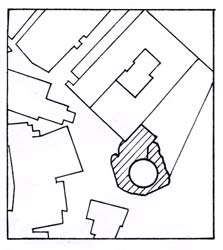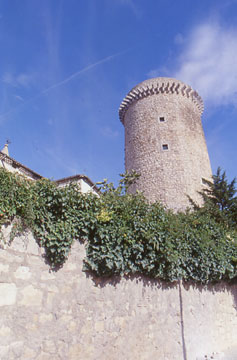![]() Castles
Castles
![]() Castle of Colletorto
Castle of Colletorto
|
Castle of Colletorto |
It stands at the south-western boundary of the town and overlooks the valley of the Celano-Foggia sheep-track and the river Fortore. Angevin records (1320) refer to the settlement by the name of “Collis Tortus”. The conformation of the town bears witness to the transformation of the original nucleus where the Franciscan church rises, with the walled burgh defended by the cylindrical keep, built at the time of Queen Giovanna I (circa 1340) as part of a general reorganisation of the defences of the hollow of St. Mary and the valley of the Fortore. The wall structures are founded directly upon an outcrop of rock. The masonry bond is mixed, with cut stones well set in somewhat irregular rows. There is a cistern in the basement. The defensive systems are represented by a surviving arrow slit, an underground passage (the valloncello) and, most of all, by a striking projection on monolithic stone corbels. On the ruins of the old castle Marquis Rota built a four-sided palace with an inner courtyard which today houses the city hall. Rising to a height of 25 metres, this building is unique in Molise, though it has interesting analogies with some Swabian/Angevin keeps found in Apulia (Lucera), Abruzzo (S.Stefano di Sessania or the enceinte tower at Bominaco), Basilicata (Tricarico, Cirigliano, S.Mauro Forte), Campania (Velia), Calabria (the tower of Malvito) and Sicily (Salemi). The most significant example is the stone keep at S.Marco Argentano in Calabria, which replaced an older wooden donjon on a motte and was built by Robert Guiscard before 1051.
 |
Castle of Colletorto |
